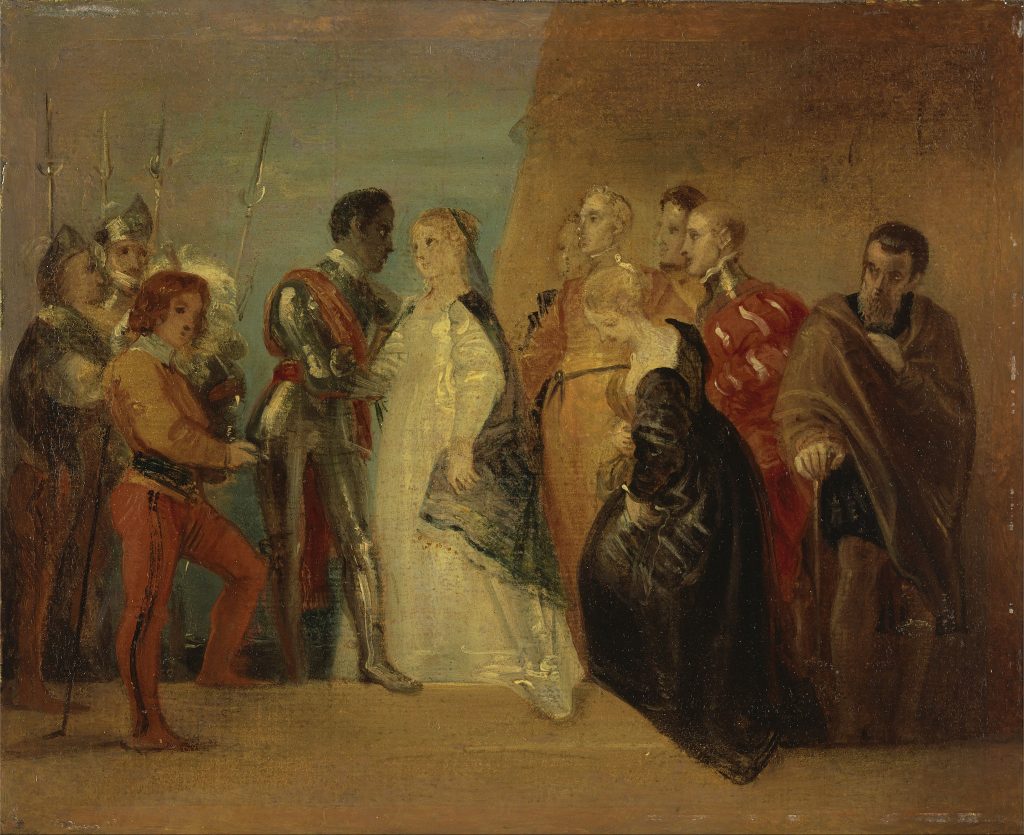Piers Gaveston (c.1284-1312), a powerful favourite of King Edward II (who reigned 1307-1327), did not attract much praise from medieval and early modern chroniclers. These accounts of English history, written first by monastic and later by secular writers, were key to forming Edward II’s reputation as a weak and sexually transgressive monarch. The chroniclers accused Gaveston of arrogance, theft, insolent name-calling, misleading Edward, and sexual misbehaviour including, in later texts, sex with the king himself. These accusations of improper sex between Edward and Gaveston have been well documented. However, another set of accusations levelled against Gaveston have received far less attention by historians: some claimed that the emotional and sexual power Gaveston held over the king was the result of witchcraft.

The accusation that Gaveston had bewitched the king was regularly repeated in contemporary discourse. “Our king,” wrote the compiler of the journal now known as the Vita Edwardi Secundi, “…was incapable of moderate affection, and on account of Piers was said to forget himself, and so Piers was regarded as a sorcerer.” The Annales Paulini recounts the gossip that followed Edward’s coronation, where “the king would minister more to Piers in the dining room than to the queen.” The Annales continues, “therefore in all the land there was this rumour, that the king loved a magical and maleficent man more than his spouse, a most elegant lady and beautiful woman.” In the late sixteenth century, John Stow embellished these remarks to implicate Gaveston’s mother:
The King gave unto Pierce of Gavaston all such giftes and Jewels as had bin given to him, with the Crownes of his Father, his ancestours treasure, and many other things, affirming that if he could, he should succeede him in the Kyngdome, calling him brother, not granting any thing without his consent. The Lords therefore envying him, told the king, that the Father of this Pierce was a Traytour to the King of Fraunce, and was for the same executed, & that his mother was burned for a Witch, and that the said Pierce was banished for consenting to his mothers witchcraft, and that he had now bewitched the King himselfe.
There is no evidence to suggest that Gaveston’s mother, Claramonde de Marsan, was ever accused of or executed for witchcraft. Nor were any formal accusations ever brought against her son. Prosecutions for witchcraft during Edward II’s reign were infrequent. The Latin word malificus, used by the Vita and the Annales Paulini, was an intrinsically theological condemnation, associated during this period primarily with heretical groups like the Knights Templar. By the time Stow was writing, in 1580, the legal climate surrounding witchcraft had shifted significantly, with a dramatic rise in prosecutions and an increased consensus that performing magic necessitated dealings with the devil. Stow seems to have taken the rumors recounted by contemporary writers, and translated them into a detailed account that would have seemed plausible to his readers, while attributing the accusations to the lords’ “envy” to avoid stating them as fact.
All three accounts frame Edward’s love for Gaveston as transgressive and excessive. To the writer of the Vita, Edward’s love went beyond appropriate “moderate affection”; to the compiler of the Annales Paulini, his preferential treatment of Gaveston over his wife caused diplomatic offence and popular rumour; to Stow, their relationship was characterised by excessive financial favour and political equality. The chroniclers suggested that this transgressive and excessive love could be attributed to Gaveston’s unnatural powers. This suggestion was not limited to Edward II, or indeed to same-sex couples. The chronicler Thomas Walsingham accused Edward III’s powerful mistress, Alice Perrers, of having attracted the king through sorcery rather than beauty. Three centuries later, the pamphleteer George Eglisham explained the emotional attachment of James VI and I to George Villiers, the duke of Buckingham, (which was the subject of sexual rumours) by claiming that, “the king was so farre bewitched to Buckingham”.

What, then, was behind these accusations? Charges of sorcery were sometimes used to discredit political opponents, including favourites who were the subject of sexual rumours involving the monarch (such as Robert Dudley in England and the Duc d’Epernon in France). These accusations (which did not result in charges), sought to blacken the name of the accused by detailing their dealings with Satan. By contrast, the accusations against Gaveston and Buckingham expressed concern about Edward and James’s attachment to their favourites, and then retrospectively attributed it to magic.
Despite a profound shift in popular and legal conceptions of witchcraft between the fourteenth and seventeenth centuries, the terms in which Gaveston and Buckingham were accused are strikingly similar. There must, therefore, be something outside of the law that links the two. We should not assume that any witchcraft accusation against a politically contentious figure must be an attempt to defame them by accusing them of a crime. Instead, we should consider what these particular accusations imply.
Observers of both Edward and James frequently demonstrated a profound anxiety about the extent to which the king should be held culpable for his dealings with his favourite. Perhaps political promotions could have been explained away by attributing them to “evil counsel,” but emotional attachment was far trickier. The accusation that Edward and James had been bewitched by their favourites provided the perfect way out. It absolved the monarchs of responsibility for their transgressive emotions, placing the blame squarely on their favourites – and it provided an explanation for how a divinely appointed ruler could have made such a catastrophic error. As one late seventeenth-century account put it, Edward II’s nobles “did verily believe [Gaveston] had bewitcht the King, or else certainly he could never retain such an unreasonable Passion for so profligate a Wretch.”
We can see an analogous case – the invocation of witchcraft in order to explain an otherwise inexplicable attraction – in Shakespeare’s Othello. Brabantio, incredulous that his daughter Desdemona would voluntarily have married a Moor, accuses Othello of bewitching her. “If she in chains of magic were not bound,” Brabantio tells Othello, Desdemona would never have fallen in love with him. Certainly, Brabantio is making the most of his opportunity here to discredit Othello by accusing him of “practices of cunning hell.” But more significant is his insistence that Desdemona simply “could not” have been attracted to Othello without magical intervention. Unable to believe his daughter’s “perfection” is capable of such error, Brabantio falls back on witchcraft as an explanation that places all the blame on Othello and reframes Desdemona as innocent victim.

By the 1620s, however, at least one writer had grown wise to the fact that witchcraft accusations provided a suspiciously convenient excuse. Francis Hubert’s Historie of Edward the Second (composed during the reign of Elizabeth I, but revised for publication in 1629) presents the accusation against Gaveston and his mother as a politically-motivated fabrication on the part of Edward’s nobles. The character of Edward then becomes a mouthpiece for the author, as Hubert openly voices his scepticism:
…when any Errour is committed
Whereby wee may Incurre or losse or shame,
That wee our selves thereof may be acquitted
Wee are too ready to transferre the blame
Upon some Witch: That made us doe the same.
It is the vulgar Plea that weake ones use:
“I was bewitch’d: I could nor will: nor chuse.”
Hubert scathingly recognised that witchcraft accusations provided a convenient way to “transferre the blame” away from the monarch. In fact, his narrator admits, “my affection was not caus’d by Art; / The witch that wrought on mee was in my brest.” Kings who developed transgressive attachments to their favourites, Hubert suggested, were fully in control of their actions. A king who might have knowingly and deliberately entered into an emotional and sexual relationship with a male social inferior was a deeply threatening prospect: no wonder earlier writers went to the lengths of inventing sorcery to avoid confronting it.


NOTCHES: (re)marks on the history of sexuality is licensed under a Creative Commons Attribution-NonCommercial-NoDerivatives 4.0 International License.
Based on a work at www.notchesblog.com.
For permission to publish any NOTCHES post in whole or in part please contact the editors at NotchesBlog@gmail.com




